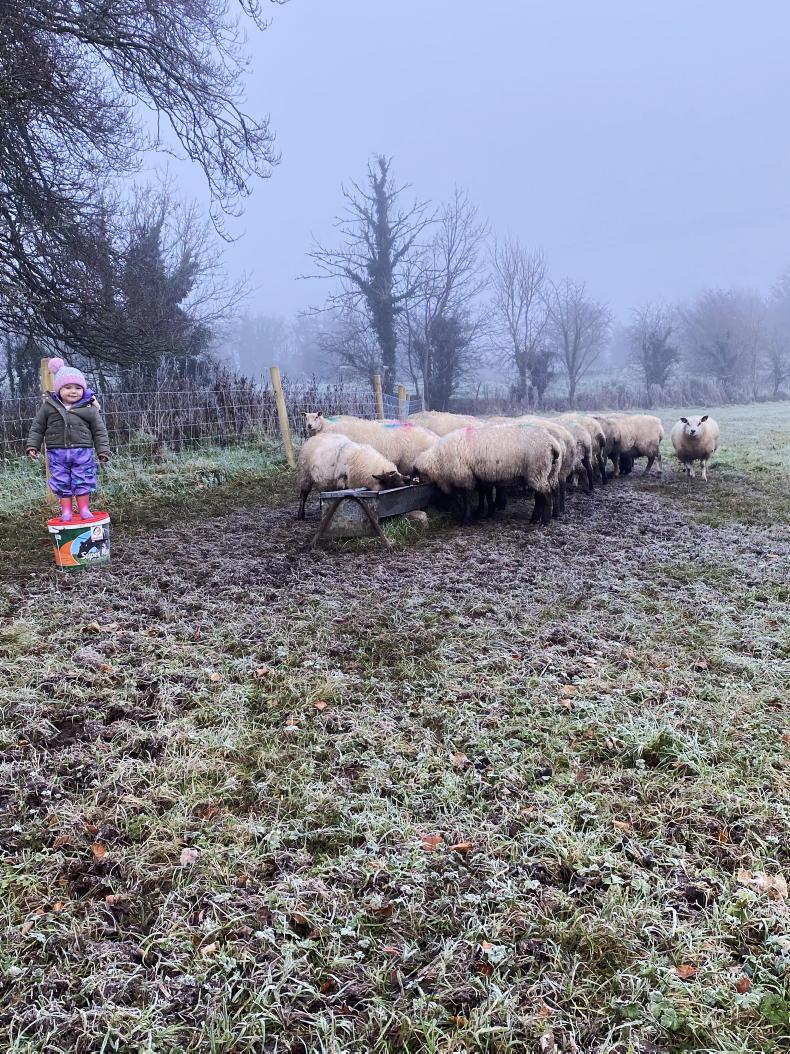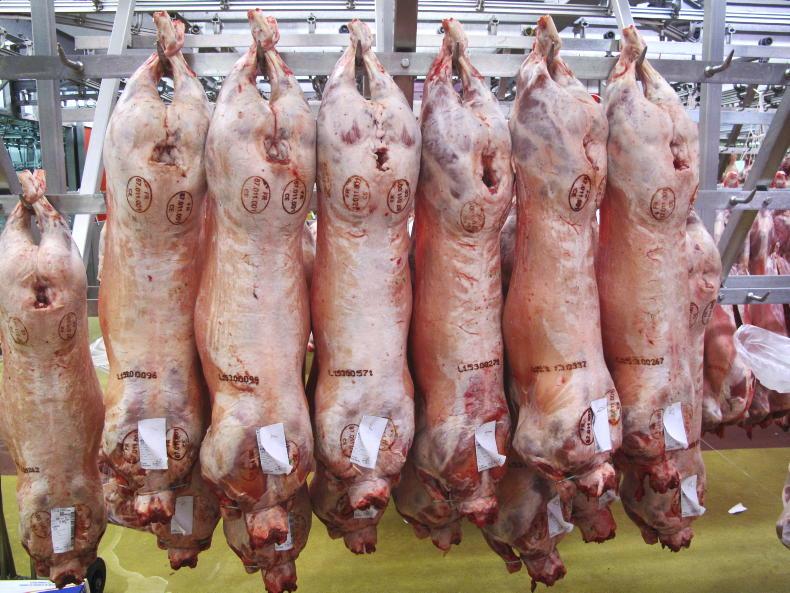With Dr Catherine Keena, Teagasc Countryside Management Specialist
Bulrush fruiting spikes
Look out for bulrush fruiting spikes. These dark brown, long cylindrical inflorescences contain thousands of seeds - each with its own parachute to catch the wind. Bulrush grows up to three metres tall in swamps or standing water on the margins of rivers, lakes and ponds, where the leaves and most of the stems are emergent. It often grows in dense stands which shelter nesting moorhen and mallard.
In Ireland, it was considered a fairy plant called ‘fairy woman’s spindle’ (nó coigeal na mban sí). It was used to make mats and baskets and is now used in floral arrangements. Bulrush is part of our native Irish biodiversity.

Up and at it early: two-year-old Ava O Gara made sure her flock were well fed on an early and cold, frosty morning in Co Sligo / Submitted by Rose O Gara
Chef’s tip with Janine Kennedy
At this time of year, my mind often drifts to gravy. What kind of gravy will I make this Christmas? Sometimes I make it a week or two beforehand and freeze it, just in case we suddenly have a mouth or two more to feed. The best gravy is often made with great stock.
This can be a poultry stock or a beef stock. Sometimes I ask my butcher if he has any beef bones available. Making beef stock takes time, but the end result is worth it. First, roast the bones in a hot oven with some whole garlic bulbs, carrots, celery and onion. Then, transfer the bones and veggies to a large stock pot and cover with cold water. Bring to a gentle simmer and add whole peppercorns, bay leaf, fresh thyme and the stems from fresh parsley. Cook and reduce the stock very slowly - this will take all day; up to eight hours or more. Skim the top occassionally to remove any scum. Then, strain it through muslin cloth into a clean container. The resulting stock is deeply coloured, rich in flavour and ready to be made into gravy, reduced to a jus (great with roast beef or steak) or – my favourite – made into a delicious French onion soup.
Some might ask: since a lot of the cups I use aren’t compostable or biodegradable, how could I justify using them? But this is all part of the circular economy – turning them into something that’s not going to be dumped.” Petals and Paper, Shirley Mcloughney.
The purchaser must spend at least 50% of their normal working time farming the land for five years from the date on which the
claim for a refund is made.

Ginger Bread Farm. \ Philip Doyle
Are you looking for a baking project for the whole family? Try building your own gingerbread farm. An Irish Farmers Journal festive family effort led by Janine Kennedy for the recent Irish Country Living Food magazine. To make your own, scan the QR code for step-by-step instructions.

Scan the code.
Read more
Find out what caught the eye of Irish Country Living team this week
Find out what caught the eye of Irish Country
With Dr Catherine Keena, Teagasc Countryside Management Specialist
Bulrush fruiting spikes
Look out for bulrush fruiting spikes. These dark brown, long cylindrical inflorescences contain thousands of seeds - each with its own parachute to catch the wind. Bulrush grows up to three metres tall in swamps or standing water on the margins of rivers, lakes and ponds, where the leaves and most of the stems are emergent. It often grows in dense stands which shelter nesting moorhen and mallard.
In Ireland, it was considered a fairy plant called ‘fairy woman’s spindle’ (nó coigeal na mban sí). It was used to make mats and baskets and is now used in floral arrangements. Bulrush is part of our native Irish biodiversity.

Up and at it early: two-year-old Ava O Gara made sure her flock were well fed on an early and cold, frosty morning in Co Sligo / Submitted by Rose O Gara
Chef’s tip with Janine Kennedy
At this time of year, my mind often drifts to gravy. What kind of gravy will I make this Christmas? Sometimes I make it a week or two beforehand and freeze it, just in case we suddenly have a mouth or two more to feed. The best gravy is often made with great stock.
This can be a poultry stock or a beef stock. Sometimes I ask my butcher if he has any beef bones available. Making beef stock takes time, but the end result is worth it. First, roast the bones in a hot oven with some whole garlic bulbs, carrots, celery and onion. Then, transfer the bones and veggies to a large stock pot and cover with cold water. Bring to a gentle simmer and add whole peppercorns, bay leaf, fresh thyme and the stems from fresh parsley. Cook and reduce the stock very slowly - this will take all day; up to eight hours or more. Skim the top occassionally to remove any scum. Then, strain it through muslin cloth into a clean container. The resulting stock is deeply coloured, rich in flavour and ready to be made into gravy, reduced to a jus (great with roast beef or steak) or – my favourite – made into a delicious French onion soup.
Some might ask: since a lot of the cups I use aren’t compostable or biodegradable, how could I justify using them? But this is all part of the circular economy – turning them into something that’s not going to be dumped.” Petals and Paper, Shirley Mcloughney.
The purchaser must spend at least 50% of their normal working time farming the land for five years from the date on which the
claim for a refund is made.

Ginger Bread Farm. \ Philip Doyle
Are you looking for a baking project for the whole family? Try building your own gingerbread farm. An Irish Farmers Journal festive family effort led by Janine Kennedy for the recent Irish Country Living Food magazine. To make your own, scan the QR code for step-by-step instructions.

Scan the code.
Read more
Find out what caught the eye of Irish Country Living team this week
Find out what caught the eye of Irish Country












SHARING OPTIONS